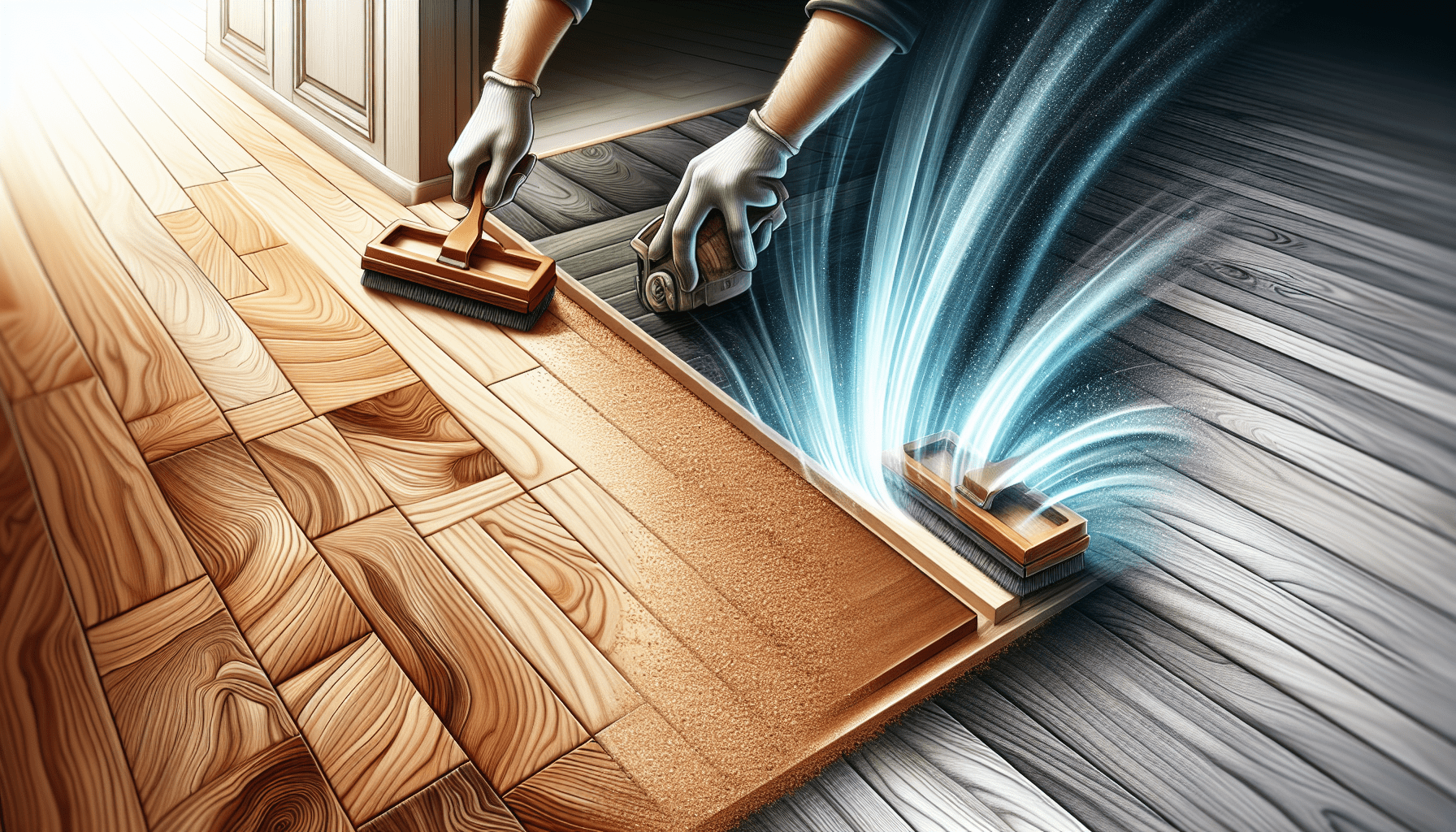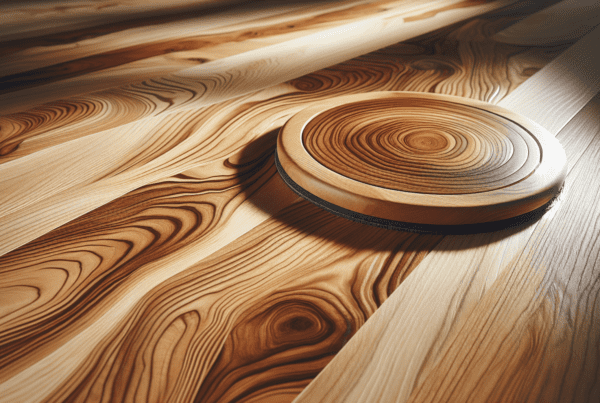In this article, let’s explore the innovative techniques of timber floor sanding and finishing that Wellington has to offer. With an eye for detail and a commitment to durability and beauty, these methods ensure that every wooden floor not only shines but stands the test of time. From the careful selection of materials to the meticulous application of finishes, join us as we uncover what makes Wellington’s approach to timber floor care truly outstanding.
Overview of Timber Floor Sanding
Definition and importance of timber floor sanding
Timber floor sanding is the process of removing the top surfaces of a wooden floor by sanding with abrasive materials. This technique is crucial for removing old finishes, scratches, and imperfections, which in turn revitalizes the appearance of the floor, making it look brand new. For us, the importance of timber floor sanding lies in its ability to extend the life of the wood floors in our homes or offices, maintaining their beauty and durability over time.
Benefits of professional sanding over DIY
While many of us might consider tackling the job ourselves, the benefits of professional sanding far outweigh the DIY approach. Professionals come armed with the knowledge, tools, and experience required to ensure a high-quality finish. They understand the intricacies of different wood types and the best sanding techniques for each. Moreover, professionals can significantly reduce the time and mess typically associated with sanding, making the process more efficient and less disruptive.
The process involved in sanding timber floors
Sanding timber floors involves several key steps, starting with the preparation of the area, moving on to the coarse sanding to remove the old finish and surface imperfections, followed by medium sanding to smooth the wood, and finally, fine sanding to achieve a polished surface. Each of these steps requires careful attention and the right equipment to ensure a uniform and smooth finish that’s ready for staining or sealing.
Choosing the Right Sanding Equipment
Types of sanders suitable for timber floors
For our timber floors, the most suitable sanders are the drum sanders, edge sanders, and orbital sanders. Each serves a unique purpose; drum sanders are great for sanding large areas quickly, edge sanders take care of the edges and corners where drum sanders can’t reach, and orbital sanders are used for the final fine sand to achieve a smooth finish.
Factors to consider when selecting sanding equipment
When choosing sanding equipment, we must consider the size of the area to be sanded, the type of wood, the condition of the floor, and the desired finish. Additionally, the ease of use and availability of the sander are also important factors. It’s crucial to select equipment that can efficiently handle our project’s specific needs.
Tips on maintaining sanding equipment for optimal performance
To ensure optimal performance from our sanding equipment, regular maintenance is key. This includes cleaning the machines after each use, checking for any worn-out parts and replacing them as necessary, and storing the equipment in a dry place to prevent rust and damage. Proper maintenance not only prolongs the life of the equipment but also guarantees better results in our sanding projects.
Innovative Sanding Techniques
Latest advancements in timber floor sanding
The latest advancements in timber floor sanding focus on dust control and the efficiency of the sanding process. Newer sanders come equipped with dust extraction systems that significantly reduce the amount of airborne dust produced. This not only makes the process cleaner but also safer and more environmentally friendly.
Eco-friendly and dust-free sanding options
Eco-friendly and dust-free sanding options are increasingly popular, as they minimize the impact on the environment and our health. Water-based finishes and sealants, along with advanced dust extraction systems, are great examples of this trend, helping to maintain indoor air quality and reduce cleanup time.
Techniques for minimizing damage and enhancing the wood grain
To minimize damage and enhance the wood grain, it’s important to use a progressive sanding technique, starting with a coarse grit and gradually moving to finer grits. This method removes imperfections without causing undue damage to the wood. Additionally, using the right type of sander and sandpaper for the specific wood type can help highlight the natural beauty of the grain.
Preparation for Sanding
Steps to prepare the area for sanding
Preparing the area for sanding is critical for a smooth operation. This involves removing all furniture and coverings, ensuring the space is well-ventilated, and checking the floor for any nails or staples that may damage the sanding equipment. It’s also a good practice to seal off the work area to prevent dust from spreading to other parts of the home or office.
Importance of cleaning and clearing the work area
Cleaning and clearing the work area not only makes the sanding process easier but also safer. Removing debris and obstacles reduces the risk of accidents and allows for unrestricted movement around the area. A clean work environment also ensures that no foreign particles mar the finish.
Assessing the timber floor condition before sanding
Assessing the condition of the timber floor before sanding is crucial in determining the best course of action. This includes identifying any repairs that need to be made, such as replacing damaged boards, and understanding the type of wood and its hardness. Such assessments guide in choosing the correct sanding technique and equipment, ensuring the best possible outcome.
Sanding Process Detailed
Sequential steps in the sanding process
The sanding process involves several sequential steps to achieve a high-quality finish. First, we start with coarse sanding to remove the old finish and any major imperfections. Next, medium sanding smoothens the surface, and finally, fine sanding prepares the floor for finishing. Between each stage, it’s important to clean the floor to remove any dust that could affect the next phase of sanding.
Troubleshooting common problems during sanding
Common problems during sanding, such as uneven finishes, can often be avoided by ensuring the sanding equipment is properly maintained and the correct grade of sandpaper is used for each stage. If issues arise, it’s usually effective to backtrack a step and re-sand the area with the right technique and equipment.
Achieving a uniform finish
Achieving a uniform finish requires consistent movement of the sander, maintaining steady pressure, and carefully overlapping each pass. Patience and attention to detail during the final fine sanding stage are key to removing any last imperfections and ensuring a smooth, even surface ready for finishing.
Finishing Touches After Sanding
Selecting the right finish for your timber floor
Selecting the right finish for our timber floor depends on the type of wood, the desired aesthetic, and the level of durability needed. Options range from natural oil finishes that enhance the wood’s natural beauty to more durable polyurethane coatings that offer higher protection against wear and tear.
Application techniques for different finishes
Application techniques vary depending on the chosen finish. Oil-based finishes require a thin, even application and ample drying time, while polyurethane finishes may require several coats with light sanding in between. Following the manufacturer’s instructions for application and drying times is crucial for achieving the best results.
How to achieve a high-quality, durable finish
To achieve a high-quality, durable finish, it’s important to prepare the surface thoroughly before application, use the right tools and techniques for the chosen finish, and allow sufficient drying time. Applying a final coat of sealant can also enhance durability and protect against moisture and scratches.
Innovations in Timber Floor Finishes
Overview of new and eco-friendly finishing products
The latest innovations in timber floor finishes include a range of eco-friendly products that are safe for both the environment and our health. These products, such as water-based polyurethanes and natural oil finishes, offer high-quality protection while reducing harmful emissions.
The role of technology in enhancing floor finishes
Technology plays a crucial role in enhancing floor finishes through improved formulations that offer better durability, ease of application, and faster drying times. Advancements in application tools and techniques also contribute to more uniform and long-lasting finishes.
Comparing traditional finishes with modern alternatives
Comparing traditional finishes with modern alternatives shows significant improvements in safety, environmental impact, and performance. While traditional oil-based finishes offer a rich, deep look, modern water-based finishes provide similar aesthetics with added benefits of faster drying times, less odor, and lower VOC emissions.
Maintenance Tips for Sanded and Finished Floors
Routine maintenance to prolong floor life
Routine maintenance, such as regular cleaning with a soft broom or vacuum and the use of wood-specific cleaners, can significantly prolong the life of sanded and finished floors. Immediate cleanup of spills and avoiding harsh chemicals also helps preserve the finish.
How to deal with scratches and minor damages
Dealing with scratches and minor damages quickly can prevent further deterioration. For minor scratches, products like touch-up pens or wax sticks can be effective. For more significant damage, a spot sanding and reapplication of the finish may be necessary.
The importance of professional assessments over time
Having our floors professionally assessed over time is important to spot potential issues early, such as signs of wear, moisture damage, or structural problems. Early detection allows for timely repairs, helping to maintain the beauty and integrity of the floor for years to come.
Choosing a Professional in Wellington
What to look for in a timber floor sanding and finishing service
When choosing a professional timber floor sanding and finishing service in Wellington, we should look for experience, reputation, and a commitment to quality. Checking for proper licensing and insurance, as well as asking for references and examples of previous work, can help ensure we select a reliable provider.
Questions to ask a potential service provider
Questions to ask a potential service provider include details about their sanding and finishing processes, the types of finishes they offer, their approach to minimizing dust and disruptions, and their policies on warranties and after-service support.
Local Wellington providers and their reputations
Local Wellington providers of timber floor sanding and finishing services have established reputations based on their quality of work, customer service, and reliability. Researching and reading reviews can help us choose a provider that best fits our needs and expectations.
Environmental Considerations
Sustainability in timber floor sanding and finishing
Sustainability in timber floor sanding and finishing involves selecting environmentally friendly materials and practices, such as using eco-friendly finishes and ensuring proper dust collection to minimize airborne particles. These practices help reduce the environmental footprint of our projects.
Choosing environmentally friendly materials and practices
Choosing environmentally friendly materials and practices, such as sustainably sourced wood, low-VOC finishes, and efficient use of resources, contributes to the sustainability of our projects. These choices not only benefit the environment but also improve indoor air quality and health outcomes.
Impact of sanding and finishing on indoor air quality
The impact of sanding and finishing on indoor air quality is a significant consideration. Using dust extraction systems during sanding and selecting low-VOC finishes can greatly reduce the release of harmful particles and chemicals, ensuring a safer and healthier environment for us all.







